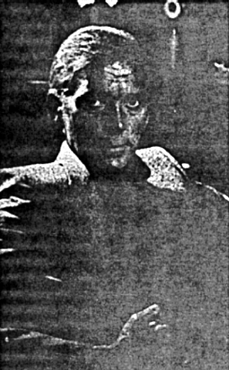
Confronting Bodies: Goskino/Cinema Workers Union
Date of Action: 1986-1987
Specific Location: Former USSR
Description of Artwork: Any filmmaker working within the Soviet Union.
Description of Incident: "Three factors have made [modern Soviet cinema] probably the most controlled and ideologically 'directed' cinema in the world. Every movie script must be approved by one of the State Cinema Committees set up in each of the 15 republics. 'It is they who make the final decision on it,' Georgian director Georgi Shengelaya explained to me recently, 'In judging the projects suitability, they take into account its artistic quality, its commercial potential, and its ideological content.' "Also, the state has complete control over a movie's distribution, deciding how wide or narrow its release will be. There are three categories, ranging from nationwide release in big theatres to minority club distribution, sometimes confined to Moscow alone, for films like Tarkovsky's or Pardjanov's. Finally, the state has the option of banning a movie completely, and of refusing to give a green light to any other films from its maker. "There are apologists for this system who see no significant difference between the ideological pressures of Western cinema. 'There's no such thing as freedom in any film industry,'claims Soviet emigre director Andrei Konchalovsky. 'Filmmaking requires an enormous amount of money, and it doesn't matter if that money is state money or corporate money. People who pay for the music order the tune. It's the censorship of power or money. "The only 'random' element is which political regime in the USSR happens to be in power when a filmmaker wants to make or release his film. For even if lucky enough to get the movie with a potentially troublesome subject made, a filmmaker can still find that Soviet history has stolen a march on him by the time he's seeking to distribute the film."
Results of Incident: In May 1986 filmmaker Elem Klimov (of "Agony," "Come & See," and "Farewell") was elected as the new first secretary for the Cinema Workers Union, replacing central committee member Lev Koudzhanov, and marking the first change at the top of the filmmakers Union in 20 years. In January 1987 Alexandr Kamshalov replaced Filip Yermash as chairman of Goskino ( Central State Committee for Soviet Cinematography) which is responsible for script approval, finance, production planning, and censorship. "Kamshalov's mission: to signal and effect a change in attitudes, to supervise the relaxation of 70 years of censorship laws, and to rescreen and release some of the banned films." "The union and Goskino are now planning to work together as equal voting partners on major movies issues, from the vetting of new movie projects to the selection for entry of films at foreign festivals Klimov and 20 colleagues - film directors, screenwriters, critics, Goskino representatives - set up a Conflict Commission to draw up a list of film to recommend for release that were banned or shelved between 1966 and 1980. The controversial Kyra Muratova's 1971 "The Long Goodbye," Gleb Panfilov's 1979 "Theme" (which, when shown for the first time in the West, at the Berlin Film Festival won top prize), and Tengiz Abuladze's 1984 "Repentance," as expose of Stalinist personality cults, are at last seeing the light of day."
Source: